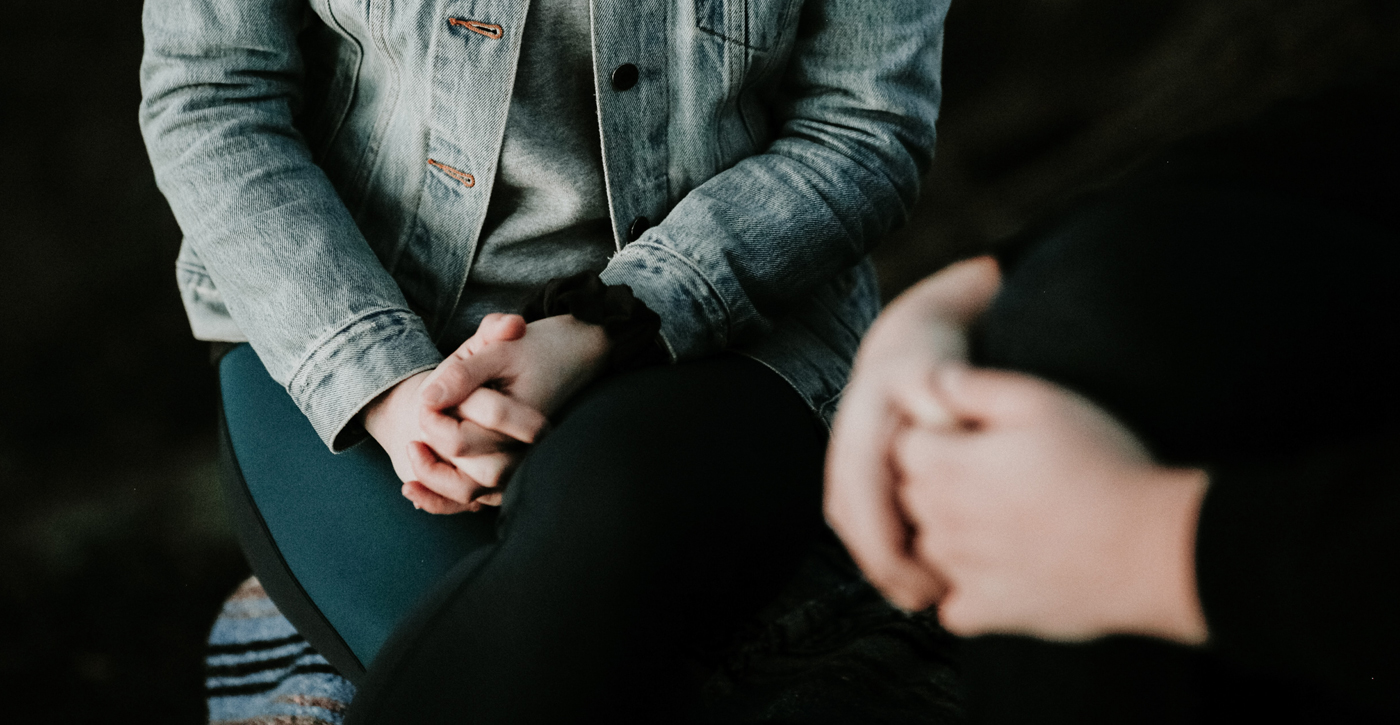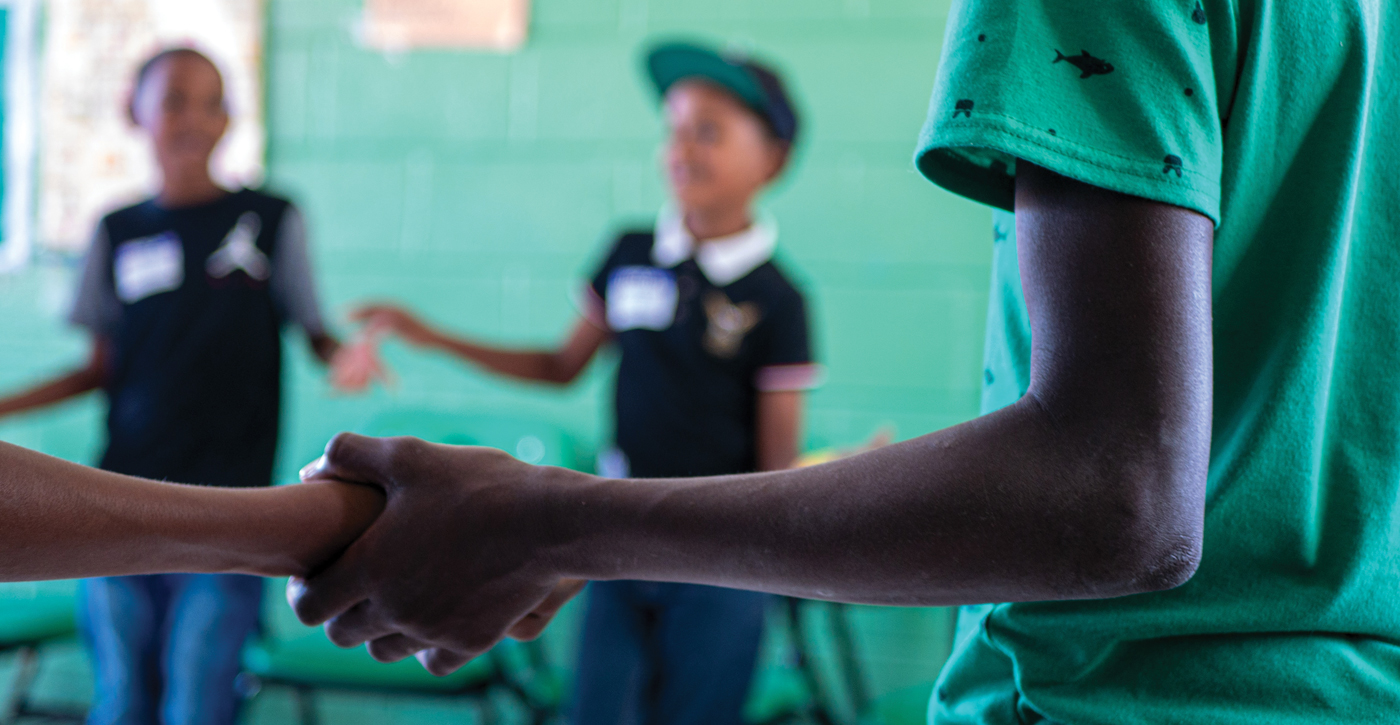A restorative and holistic approach to peacemaking is urgently needed in a world where violence is an integral part of the fabric of our global community. The media and our elected leaders fan our fears, and we readily slip into defense mode. We sometimes forget Gandhi’s living example of his words, "Be the peace you want to see," and Penn’s query on seeing what love can do. How can we make a difference? How do we know when our work for peace is effective?
The emerging social movement for Restorative Justice (RJ) offers timely guidance to restore right relationships and take responsibility for our actions—to each other and to our environment. Based on concepts and practices of indigenous peoples from around the world, the present movement was resurrected in the 1970s. A Canadian, Albert Eglash, is credited with the term restorative justice as a form of addressing restitution in the criminal retributive system. To First Nations Canadians, it was already a universal truth that everyone is accountable to the community and that people need to get along in order to survive. That truth is still relevant and still universal.
Ceremony was important in traditional peacemaking practices. In the Americas, ceremonies included shared meals, fasting, vision quests, and sweat lodges. Closure to an agreement could symbolically include rituals such as smoking a pipe, burying a hatchet, or feasting, as described by Evan Pritchard in The Way of the Heron (see http://www.algonquinculture.org). Traditional African societies used many similar practices in their peacemaking. Although the particular ceremonies were unique to the group, the intended outcome was the same (as described by Birgit Brock-Utne in Indigenous Conflict Resolution in Africa—see http://www.africavenir.com). Uganda’s practice, for example, included having all parties drink a bitter herb from the Oput tree to symbolize the bitterness the disagreement caused the community. With the help of elders, all affected parties were brought together to find a resolution that worked for the whole community.
Modern-day circles, in the manner of traditional practices, bring everyone affected by a conflict together to tell our stories and take responsibility for the effects of our behaviors. In a circle guided by a facilitator, an elder, or other respected peacemaker, the group looks for ways to repair damage, heal wounds, and make things better. Together, the stakeholders find solutions that honor themselves and their communities—locally and globally.
Mennonite author Howard Zehr, author of The Little Book of Restorative Justice, whose pioneering work provides an understanding of restorative practices, lays out the essential guidelines:
- Who has been hurt?
- What are their needs?
- Whose obligations are these?
- Who has a stake in this situation?
- What is the appropriate process to involve stakeholders in an effort to put things right?
These queries are the basis for reframing issues in a wide range of societal violence—beyond the legal justice system where they were first applied.
Women’s Peace Exchange 2007
A group of Quaker, Jewish, and Muslim women gathered in the autumn of 2006 and decided to invite Israeli and Palestinian women to join them in a women’s peace exchange. Grandmothers from Great Britain, who pioneered a Women to Women for Peace organization at the height of the Cold War, were also invited to join the delegation. Skeptics questioned what good such a gathering could do towards a century-old Middle Eastern conflict. Questions were raised about the ability of a small group of women to raise the necessary funds to accomplish such an ambitious task. Organizers of the Women’s Peace Exchange 2007: Nurturing the Seeds of Peace, remained steadfast in their belief that bringing people together—to face each other—is possible and can make a difference.
Organizers employed a key RJ principle that states: "Show equal concern and commitment to victims and offenders, involving both in the process of justice." In the group’s initial circle, a safe space was created so stories could be told and healing could begin. Slowly at first, as trust was being built, the truth began to emerge and then erupted. Our Israeli and Palestinian guests, who lived mere miles from each other, discovered their realities were worlds apart. U.S. and British women moved between detachment and guilt for the policies of their countries in the conflict—both historical and present-day. None of us could escape the reality that all of us were affected by this struggle.
How does this affect you? Once the space for dialogue is established and the intention for making things better is agreed upon, participants are ready to ask the hard questions and do some intense self-examination and listening. The participants are invited to begin with the center of their own universe—themselves. As people share their stories and explore their feelings and desires, they discover their common humanity. Through this simple yet profound process, hearts open and bridge-building can begin.
In our initial circle, a Palestinian and a Jewish Israeli woman discovered a similar value: they worried about the safety of their children and wanted the best for them. One had given up a satisfying job in order to be available to her son who had to navigate many Israeli checkpoints each day to and from school. The other agonized over her grandchildren being turned into soldiers and taking part in the occupation. They looked in each other’s eyes as they spoke their truths and were each as surprised as the other with what they heard. One chose to teach her children nonviolence in the way of Jesus and Gandhi and the other encouraged her children to leave the country—to save their souls and their lives. Tears and hugs ensued.
Who else is affected and how? Moving from me to thee, restorative practices direct participants to look outside themselves and see who else is hurting and affected by a given situation. As we identify the stakeholders and the needs of the greater community, accountability and responsibility are shared in a wider context.
As our small group of women explored this question regarding life in Israel and the occupied territories, we discovered the myriad ways we are all affected by the situation. Our families and friends, our faith communities, and our countries were all connected like a giant web. Emotions run raw on this subject and we didn’t pretend to have solutions to the problem. All we had was a process and our willingness to take a risk and speak out truth.
What are the unintended consequences of actions and programs? In the process of being peace, we were becoming more aware of our real power and our voices became stronger. We grew into our roles as citizen diplomats. The delegation participated in a panel discussion at a conference called "The Effects of War on Women and the Environment in Israel/Palestine" in Washington, D.C. We ate together, gave each other backrubs, and took walks in the woods. Sometimes we couldn’t talk with each other because of perceived differences that in the moment seemed insurmountable. And sometimes we had trouble finding the strength to meet with yet another group of strangers. At these times, we circled up and reminded ourselves of our love for each other and our mutual desire for justice and peace.
Near the end of our time together, we again asked the question of who has been affected. This time the intention of the question was to name all those whom we had touched with our message. The list was robust and seemed endless. We looked at each other in astonishment, knowing that something bigger than us had happened—something that touched each of us profoundly and that did make a difference. We knew that many had been moved by our powerful circle of ordinary women.
What can I/we do to make things better? An agreement that emerges from a restorative dialogue circle needs to include apologies and acknowledgements of accountability as well as a concrete plan that can be implemented. Since we were all on the same side of the problem by the second week, this question evoked amazing responses that were incorporated in a visionary and yet practical agreement. Our working plan included specific follow-up commitments as well as support for the United Nations Security Council Resolution 1325 for Women, Peace, and Security (see http://www.peacewoman.org). We came to the circle as individuals with our own views of reality and parted as sisters with deeper commitments to justice and peace.
Evaluation and next steps: A careful review of the process is important to learn how to do it better the next time. A focus on what works (rather than what doesn’t work) provides an opportunity to create a base on which to build future collaborative work. We all had learned a lot from the experience. Although some things we would do differently the next time, those involved in Women’s Peace Exchange 2007, overwhelmingly, responded with something akin to "You bet, we’d do it again."
Other Ways Restorative Principles and Practices Are Used
Juvenile services in approximately 28 states refer young people for restorative dialogue in lieu of the traditional retributive path. Seen as a type of mediation, the circle expands to include the support system of each youth. Parents and friends, aunts, uncles, or teachers are a part of a process that comes to an agreement deemed as fair and reasonable by everyone involved.
Community conferencing, in the tradition of the Maori peoples of New Zealand, has been practiced in Baltimore, Md., since 1995. The program brings everyone affected by conflict together in a circle to talk with each other and come to resolution. The Center’s services are available to a variety of sectors including neighborhoods, criminal justice, law enforcement, schools, and human services. The program is promoted by the campaign for a Department of Peace as a best practice to be replicated. (More information may be found at http://www.communityconferencing.org.)
School systems begin to follow the example of Canada, New Zealand, and Great Britain in using the restorative model instead of expulsion for early offenders. Circle talk, Rap Circles, and Restorative Dialogue Circles are among the names of the process used for prevention. The facilitated group encourages community building and accountability for behavior among those who participate.
Sulha is the Middle Eastern process of peacemaking that has been revived by a dynamic and diverse group including Israeli Jews, Arabs, and Palestinians. The annual gatherings in Israel bring people of differing views, cultures, and experiences together over several days to share meals, music, and interfaith ritual. Listening circles offer opportunities to understand others and seek solutions. Co-founder Gabriel Meyer says, "We’re going to surprise reality until it changes." (For more information, see http://www.sulha.com.)
The Alternatives to Violence Project (AVP) is well known in Quaker communities as a model birthed in the 1970s for teaching conflict resolution and violence prevention in the prison system. Seated in a circle, participants face each other and engage in dialogue that incorporates some restorative practices—and is often life-changing. Transforming power as a key element in the program offers possibilities for personal change. Practitioners of both AVP and RJ are seeking ways to incorporate core restorative principles in the well-respected model that could bring much needed change to the prison system. (For more information, see Michael Bischoff’s article, "How Restorative is AVP? Evaluating the Alternatives to Violence Project according to a Restorative Justice Yardstick," at http://www.clarityfacilitation.com.)
The Native American blessing "All my relations" speaks to the connectedness of all life. Who will speak for the voiceless and the children and the women, the water and the environment? No longer can any of us opt out of our part of a problem—and our responsibility for seeking solutions. Our global village urgently needs us to circle up, heal our hurts, and work together to make things better.



